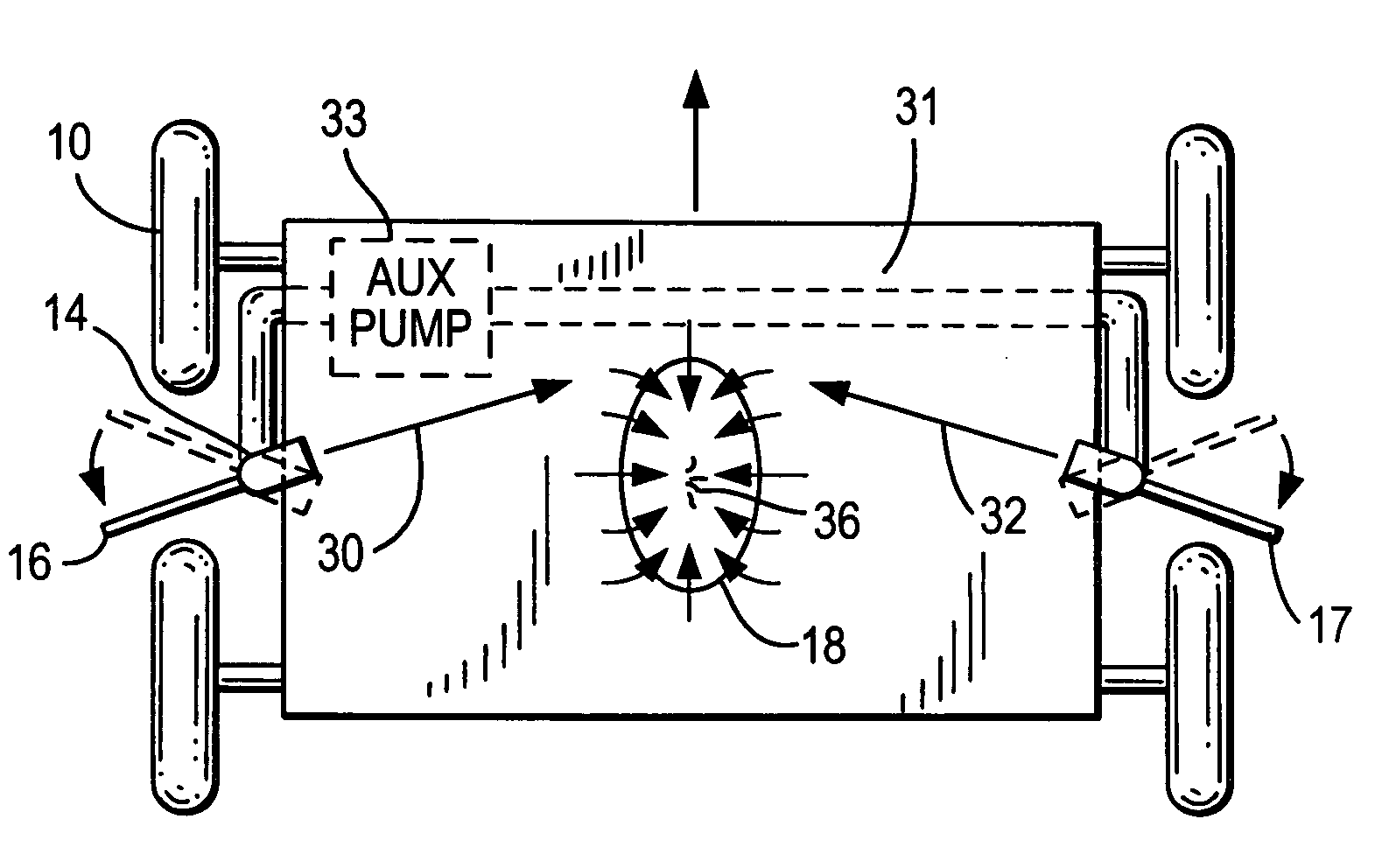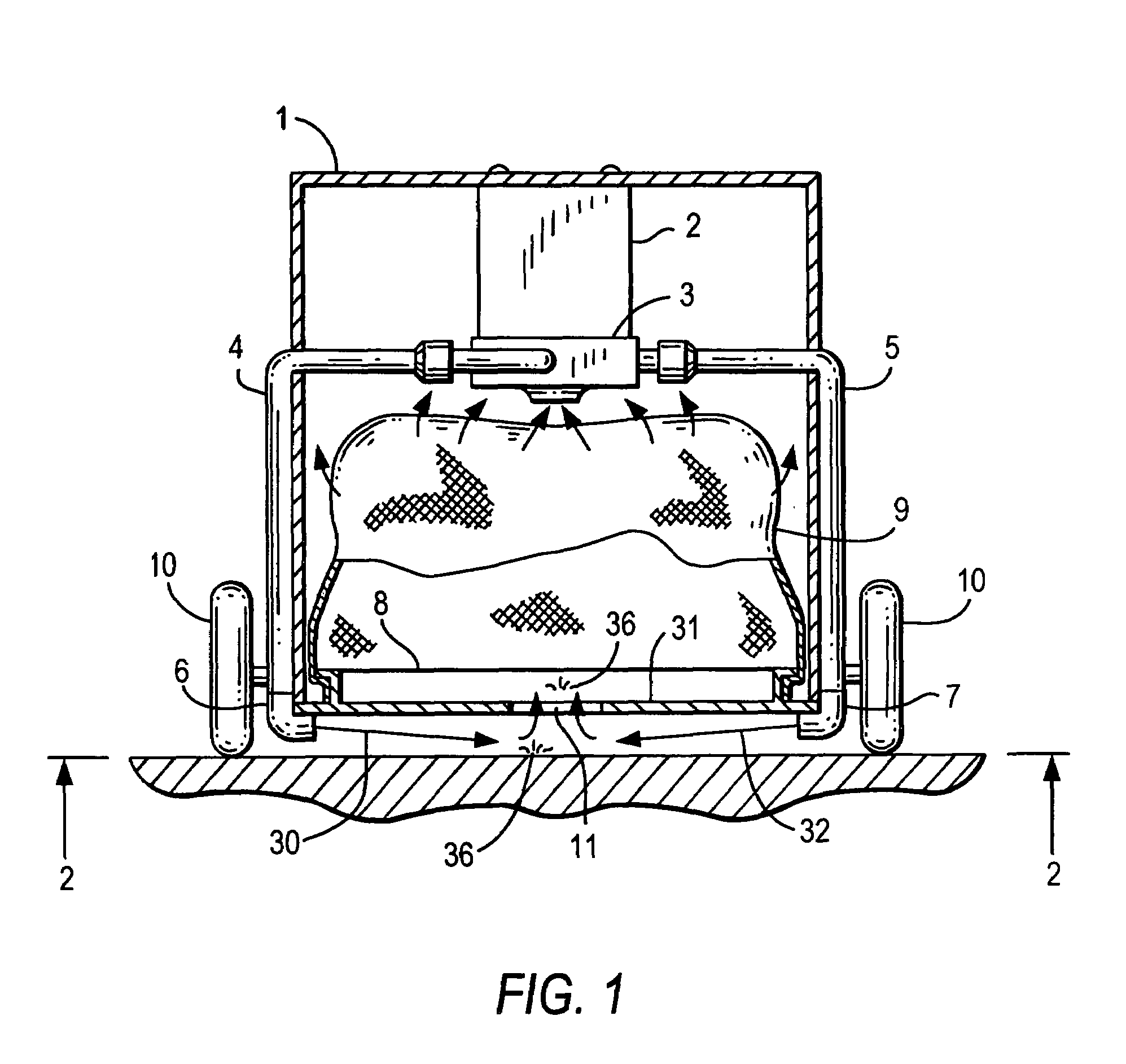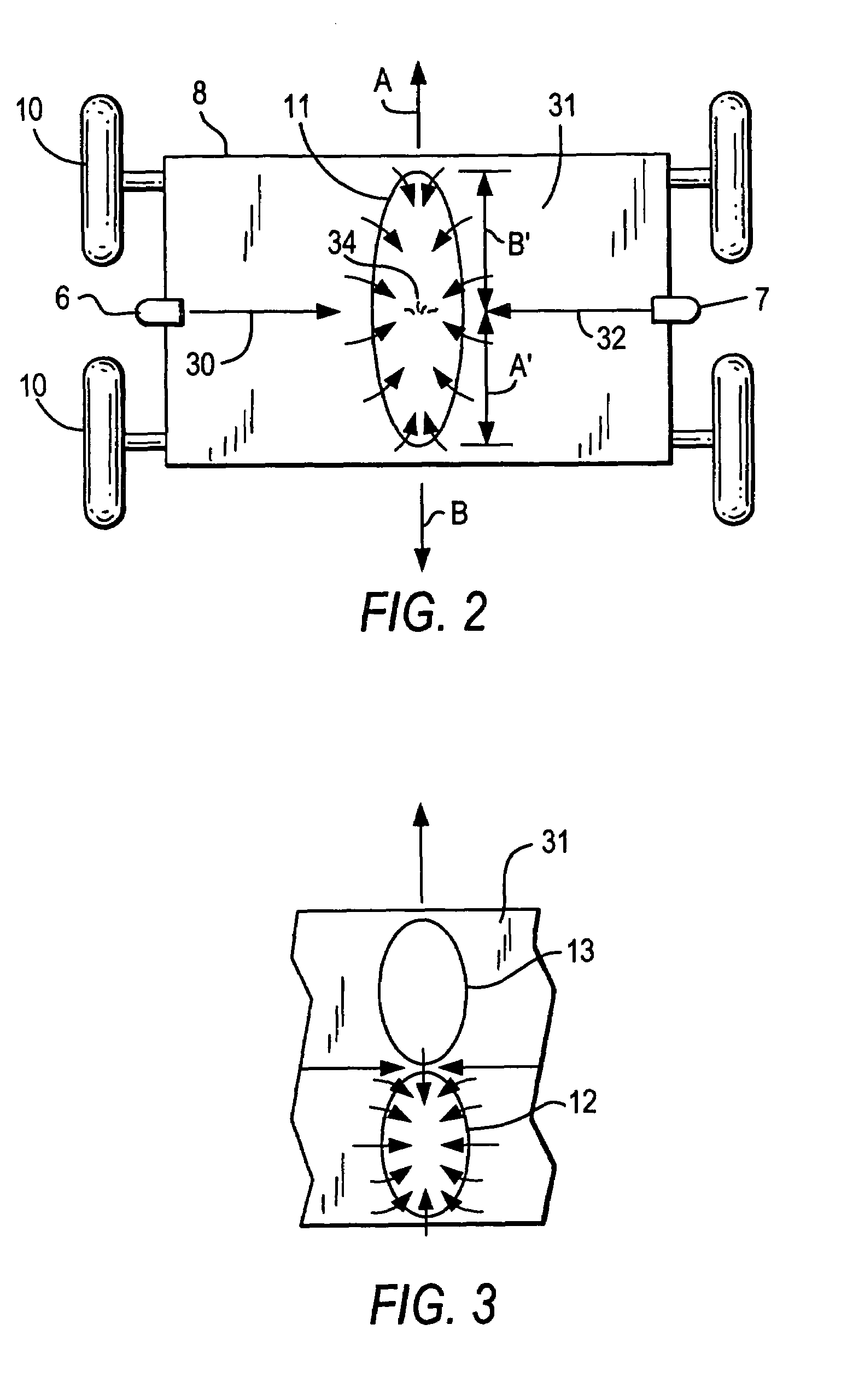Cleaner with high pressure cleaning jets
- Summary
- Abstract
- Description
- Claims
- Application Information
AI Technical Summary
Benefits of technology
Problems solved by technology
Method used
Image
Examples
first embodiment
[0027]Referring to FIG. 1, a self-propelled robotic swimming pool cleaner implementing the present invention is shown, which includes a housing 1, an electric motor 2, a centrifugal pump 3, connecting tubes 4 and 5, jet nozzle elbows 6 and 7, filter bag holder 8, filter bag 9 and wheels 10 supporting the housing 1. The self-propelled swimming pool cleaner can include features known to the prior cleaning apparatus which are moved by the directional control of one or more water jets and valves, such as the apparatus described in U.S. Pat. No. 6,412,133 B1, the disclosure of which is incorporated herein by reference in its entirety.
[0028]As further illustrated in FIG. 2, the water jets 30, 32, are supplied by the centrifugal pump 3 and discharged by the jet nozzles 6, 7, respectively, are directed toward the dirt and debris 36 on the pool surface below the baseplate 31. The baseplate 31 is provided with an oval-shaped aperture forming an intake port 11. The intake 11 is oriented in a f...
second embodiment
[0031]In the second embodiment shown in FIG. 3, the one long intake opening of the intake 11 of FIG. 2 is replaced by two smaller openings 12 and 13, one of which is always closed, as by a solenoid switch or other means. Thus, the speed of the intake stream as indicated by the arrows can be doubled.
[0032]With reference to FIG. 4, there is shown yet another embodiment in which swiveling elbow jet nozzles 14 and 15 are equipped with fins 16 and 17, respectively, which automatically change the positions of the nozzles due to the force of the water, or water resistance, as the cleaner changes direction, to thereby always point to the upstream end of the intake 18. In the angular arrangement of the jet nozzles 14, 15 illustrated in FIG. 4, water is discharged at a predetermined pressure to move the debris 36 at a velocity that greatly reduces the relative speed between the debris 36 and the cleaner optimally to zero. This permits the cleaner to move at a relatively higher speed while the...
PUM
| Property | Measurement | Unit |
|---|---|---|
| Pressure | aaaaa | aaaaa |
Abstract
Description
Claims
Application Information
 Login to View More
Login to View More - R&D
- Intellectual Property
- Life Sciences
- Materials
- Tech Scout
- Unparalleled Data Quality
- Higher Quality Content
- 60% Fewer Hallucinations
Browse by: Latest US Patents, China's latest patents, Technical Efficacy Thesaurus, Application Domain, Technology Topic, Popular Technical Reports.
© 2025 PatSnap. All rights reserved.Legal|Privacy policy|Modern Slavery Act Transparency Statement|Sitemap|About US| Contact US: help@patsnap.com



